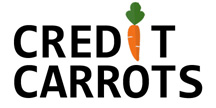Real Estate Investment Trust (REIT) stocks have been very popular. The reasons are that they provide a low cost way for exposure to real estate, a healthy monthly payout, and you’re also investing in something tangible. As an added bonus, you can also hold REIT’s in your TFSA account! This means that the monthly payouts are not taxable by the government.
How do you go about picking the right REIT stock though? If you don’t have time to do all of the detailed research, then your best bet is to buy a REIT Exchange traded fund (ETF). They allow you to get exposure to a wide variety of REIT’s by simply buying a single low cost ETF.
Two of the best REIT ETF’s in Canada are offered by Bank of Montreal (BMO) and iShares. BMO offers the Equal Weight REIT Index ETF (Symbol: ZRE) while iShares offers the S&P/TSX Capped REIT Index ETF (Symbol: XRE). Both are excellent choices when it comes to REIT ETF’s, and people often have trouble deciding which one to own. If you don’t have much time to read through our article, then here is our recommendation:
TL;DR: We like ZRE better than XRE.
Why is this the case? Read on to find out why we think ZRE is better than XRE! But first, a bit of background on both funds.
ZRE is the Bank of Montreal Equal Weight REIT Index ETF. This has been designed to track an index of Canadian REIT stocks. The “equal weight” means that the ETF will invest and hold the REIT’s in the same proportion as they represent in the index.
XRE is the iShares S&P/TSX Capped REIT Index ETF. This has also been designed to track an index of Canadian REIT stocks. The “capital weight” means that the ETF will use a stock’s market price and outstanding shares to determine what percentage of the ETF it should make up.
Now, both ZRE and XRE are similar ETF’s, but there are some important differences:
Equal weight versus capital weight. You might be wondering what all the fuss is about when comparing “equal weight” to “capital weight”. In this particular situation involving the REIT ETF’s, equal weight essentially gives you better risk protection in case one of the large REIT companies implodes and goes bankrupt when compared with a capital weight fund.
Now we don’t think there’s anything wrong with capital weight funds when we’re talking about something like a broad index fund with hundreds of companies. However, with a REIT fund that only holds 20-30 companies where a large company can represent 25% or more of the fund, the capital weight method does represent some additional risk if that single large company runs into trouble.
Assets under management. Investors have piled more money into XRE when compared with ZRE. iShares is an excellent brand name when it comes to ETF’s so you may want to consider that the fund manager and team at iShares may have a more proven track record. The iShares ETF is also more liquid in that it has a higher trading volume.
Distribution Yield. From our research it looks like the monthly distribution from ZRE is usually a bit higher than XRE. The little bit of extra distribution yield is nice especially since the management fees for both funds are exactly the same.
Annualized Performance. If you look at the funds since their inception, ZRE has slightly outperformed XRE. It doesn’t outperform by much, but a win is a win.
Even with the differences, you really can’t go wrong buying either of these REIT funds. The reasons we like ZRE more than XRE are due to the equal weight allocation in addition to the marginally better long term performance.
We are not financial advisors, and no content on this site should not be taken as financial advice. No guarantee can be made if you invest based on the information provided on this blog. We make no warranty of any kind regarding the blog and/or any content, data, materials, information, products or services provided on the blog.











Leave a Comment